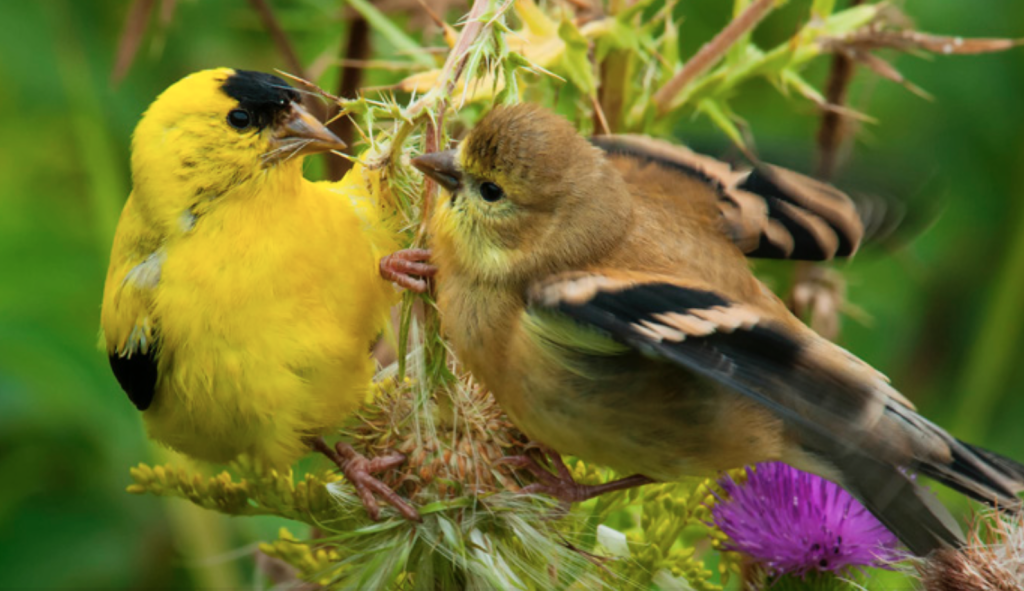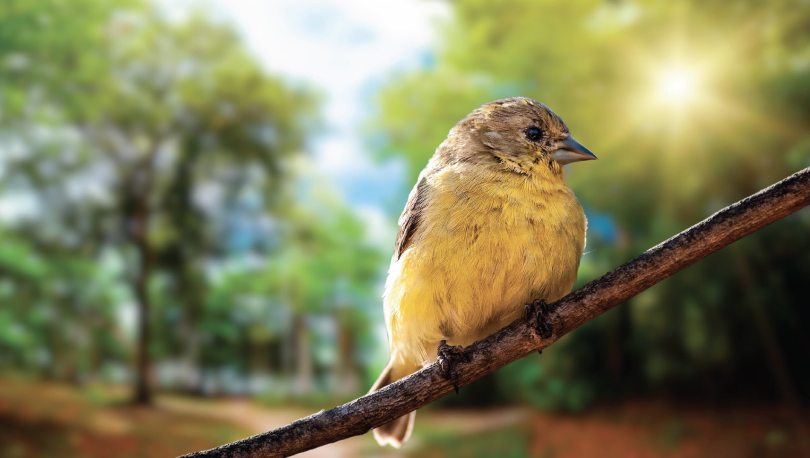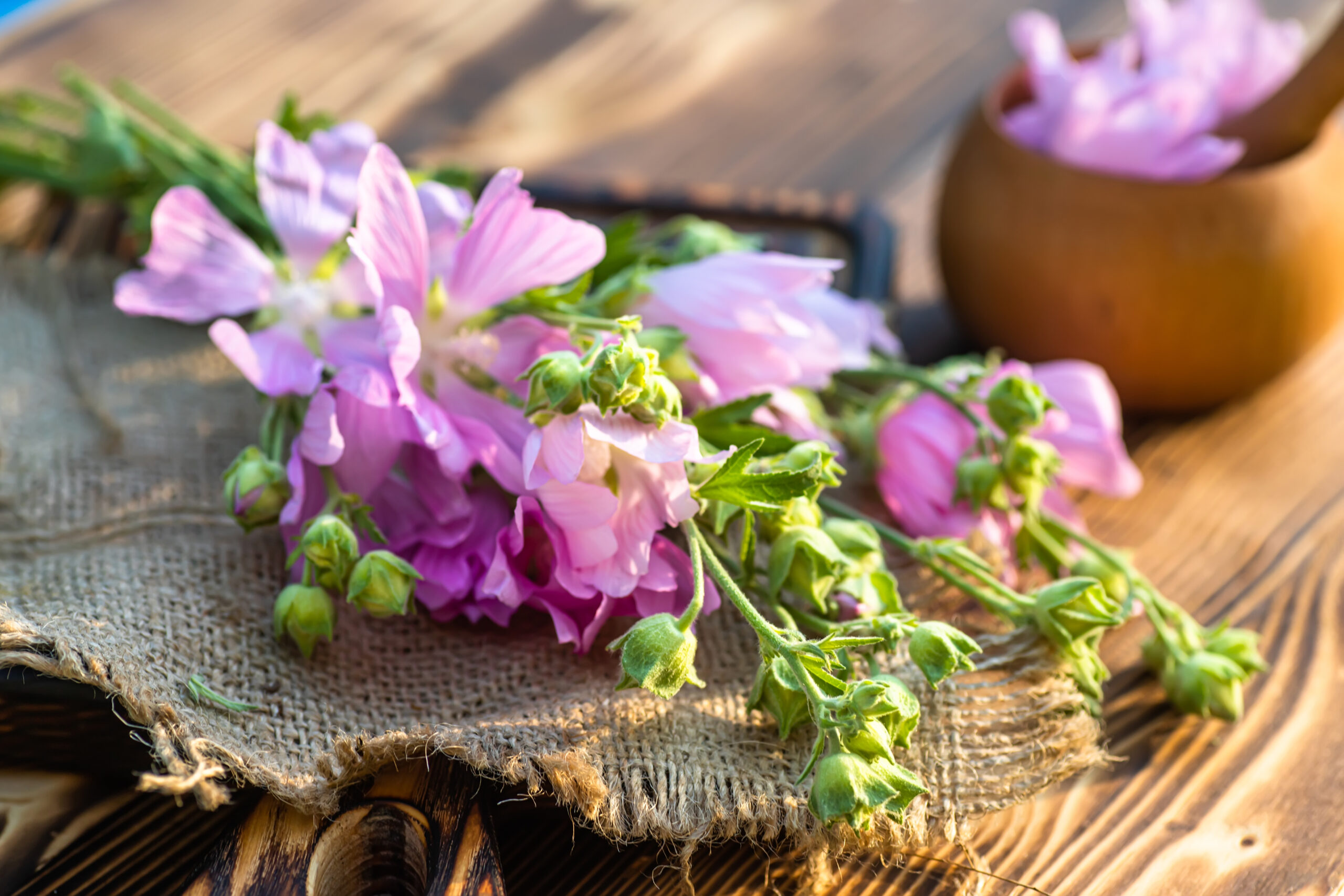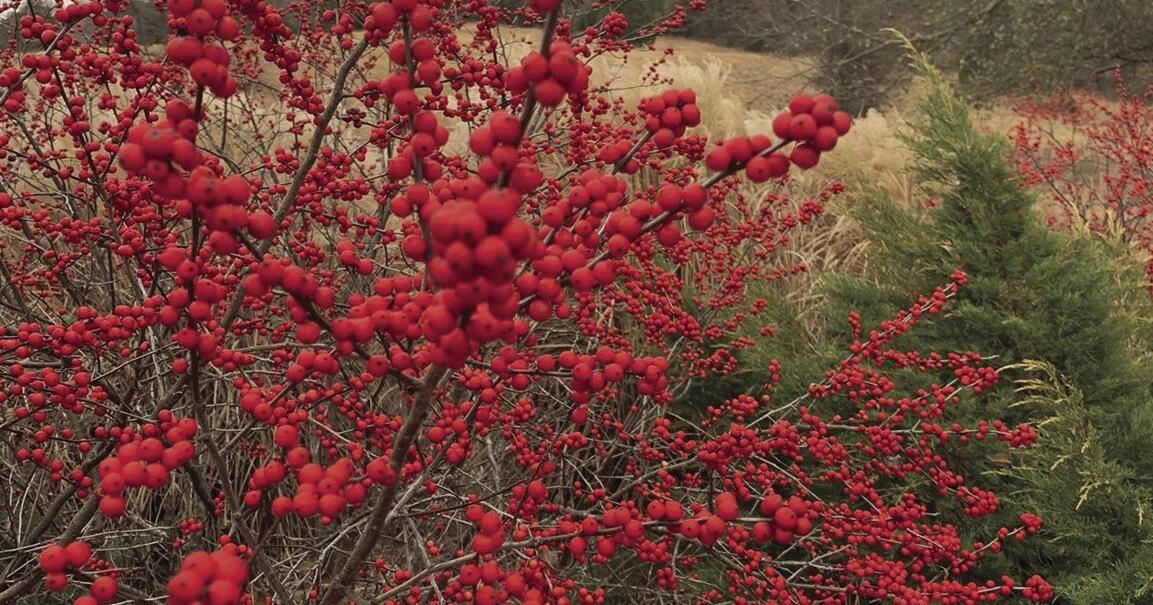It’s hard to miss the cheerful yellow and contrasting black and white wing markings of male American goldfinches, especially when they’re crowded around your backyard bird feeder. Goldfinches are big fans of bird feeders. Although they will eat most small seeds, they love thistle (Nyjer) and sunflower seeds. To keep your birds happy make sure the seed stays dry. Most tube and mesh feeders are fine; a sock feeder also works well.
If food is plentiful, goldfinches won’t typically migrate very far, which means their distinctive per-chick-o-ree call can be heard year-round. But you might not notice them at your feeders. When winter arrives, the males take on a more subtle brown coloring to match the females. The male American goldfinch sports three main feather colors during breeding season: golden yellow, black and white. Look for a small yellow bird with black wings, tail and forehead and an orange bill. They look like tropical birds. They measure 5 inches with a wingspan of 9 inches. This tiny finch weighs in at about half an ounce. That’s roughly one-fifth the weight of an American robin.
As usual the females are less colorful year- round. The female is a duller yellow with patches of drab olive and white wing bars. Finches, like most small birds, molt all their feathers at the end of summer or during fall. This molt during the fall is far less noticeable than the transition back to their bright breeding plumage in spring.
It’s fascinating to watch how quickly the males transition back into their dapper summer plumage.Not only will thistle seeds attract finches, the birds famously use down from mature plants to line their nests. It’s one reason that they nest so late in the season, usually between late June and early August. The problem with thistle is that many types are invasive. When planting, look for native plants. Thistle isn’t the only material females use to line their nests. Milkweed, cattails and dandelion are other options, as are willow catkins and cottonwood fluff.

This is part of what makes these birds so fascinating: They are incredibly adaptable to their environment. Mama bird wants her nest in a cup shape, so if she can get access to a more supported structure she’ll use that. They often build nests in a vertical fork, where three or more branches meet to form the perfect spot for cup shape. Plants like dogwood, elderberry, buttonbush and hawthorn are common, as are Monterey pine, willow and fruit trees.
These birds prefer open, weedy fields with shrubby edges. By the time they have young in the nest, it is late summer and they can easily find an abundance of wild seeds to feed their offspring. The female lays four to six pale-blue eggs. Our colorful Goldfinches aren’t under threat. We have a breeding population of around 42 million. Found in cities and agricultural areas, they are a species that has done well with their human neighbors.







